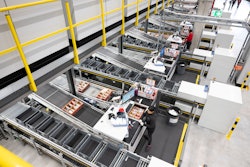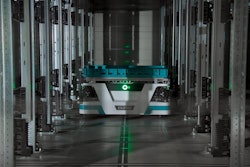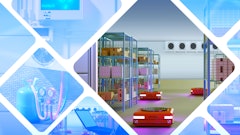
Researchers in the consumer packaged goods (CPG) industry face significant challenges. They must swiftly and cost-effectively develop products that cater to a dynamic marketplace. Beyond this, labs are now tasked with creating more sustainable products for a health-conscious customer base, one that seeks plant-based foods, clean beauty cosmetics, and environmentally friendly products made from natural ingredients.
Moreover, consumers expect these goods to be fairly priced, innovative, and beneficial to their daily lives.
A recent analysis from NielsenIQ reveals that today's food and beverage consumers increasingly "reach for products on store shelves that promote both physical and mental well-being," with a preference for vegan and low-sugar alternatives to highly processed foods. Furthermore, 61% of those surveyed agree that environmental issues adversely impact their current and future health, driving them to purchase products with fewer additives, better health benefits, and support a more circular economy.
Aiming for health and wellness
As more consumers and CPG suppliers embrace health and wellness, expectations to support these preferences are on the rise. The Consumer Goods Forum’s Kyoto 2023 Global Summit report highlights the need for major innovations in food technology, particularly alternative proteins, to meet global consumer demand for animal products while reducing greenhouse gas emissions.
Achieving this requires a fundamental transformation in product development, starting in the laboratory. Unfortunately, many corporate labs still rely on outdated methods and systems. Researchers often struggle with extensive paperwork and fragmented data from disparate laboratory information management systems (LIMS) and disconnected point solutions.
This data fragmentation is especially prevalent in larger organizations with multiple R&D facilities. Technicians with limited collaboration opportunities may unknowingly duplicate expensive research or processes, leading to critical errors, mistrust in test results, and missed opportunities. Additionally, this can complicate regulatory compliance, making it challenging to produce necessary test results and experimental data, potentially raising red flags with auditors.
Enter the virtual lab
The solution lies in transforming fragmented lab silos into fully integrated virtual labs. Without a comprehensive, cloud-based laboratory informatics system, data siloes persist, stifling efficiency and innovation, and hindering product development in a rapidly evolving marketplace. The answer lies in adopting a virtual twin approach. As many manufacturing companies, including those in CPG, have discovered, this involves replacing paper, spreadsheets, and customized software with a unified data platform.
Adopting such a system offers numerous benefits, with data management being paramount. Lab employees can store scientific records and observations in a universal format accessible to all, eliminating duplication and conflicting data. This results in significantly increased lab efficiency, faster time to market, and lower development costs.
A comprehensive database allows researchers to share and build on each other's work. Existing knowledge is no longer confined to a single location, fostering team collaboration and eliminating the risk of redundant research. This enables scientists to utilize a data-driven product development strategy rather than relying on guesswork and tribal knowledge.
This transition to a virtual lab provides access to advanced predictive modeling and simulation tools, reducing physical testing by 50% or more and accelerating the market introduction of innovative products. Additionally, virtual shelf life and stability tests for example can use predictive models, that can be conducted in a fraction of the time compared to traditional physical testing.
Beyond efficiency
The benefits of a virtual lab extend beyond increased efficiency. Those who have embraced the Virtual Twin report better inventory management, reducing raw material consumption by 30% or more. Enhanced reporting capabilities and improved data searching, sharing, and analytics allow team members to leverage even historical data. With everyone using the same digital platform, workflows become more streamlined and configurable according to the researcher's responsibilities and capabilities.
The new standard
A truly virtual lab provides a 20% improvement in formulation innovation, up to 25% faster project completion, 40% less time spent recording and analyzing information, and a 95% reduction in data aggregation time, facilitating quicker trend identification and crucial insights for CPG labs.
CPG companies are encouraged to look beyond immediate challenges when selecting an R&D solution.
In the near future, artificial intelligence (AI) and machine learning will become standard practice in the lab, building on the capabilities of virtual labs and propelling the CPG industry in bold new directions.
These transformative technologies will further streamline R&D activities, providing nearly instantaneous analyses of customer satisfaction, future demand, regulatory requirements, supply chain considerations, and more. By embarking on the virtual twin journey now, companies will fully realize the benefits that virtual labs promise to deliver.
The future of virtual labs
To fully harness the potential of virtual labs, data science must be at the core of the platform. This ensures that self-learning algorithms are supported in the new world of assisted AI solutions. By integrating robust data science capabilities, virtual labs can continuously improve and adapt, providing ever-increasing value and innovation in product development.




















